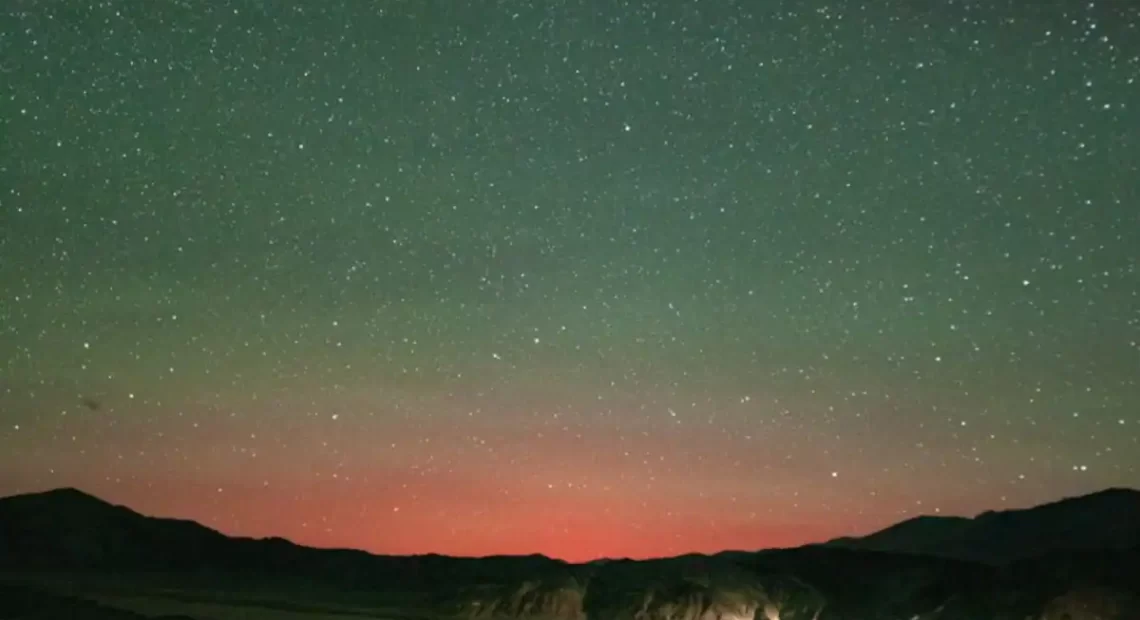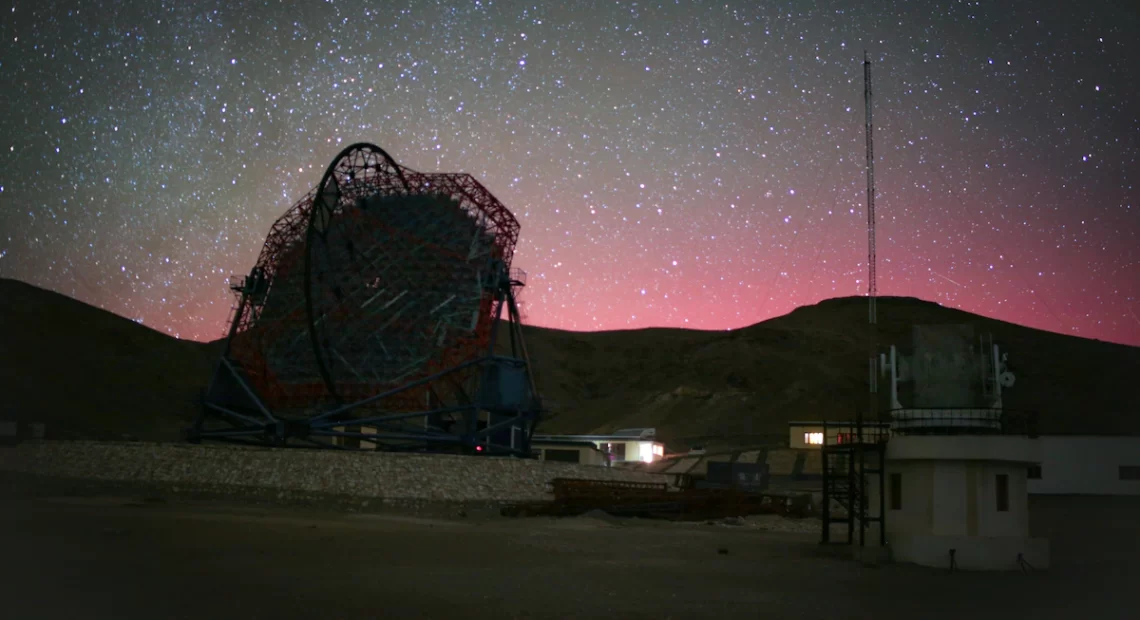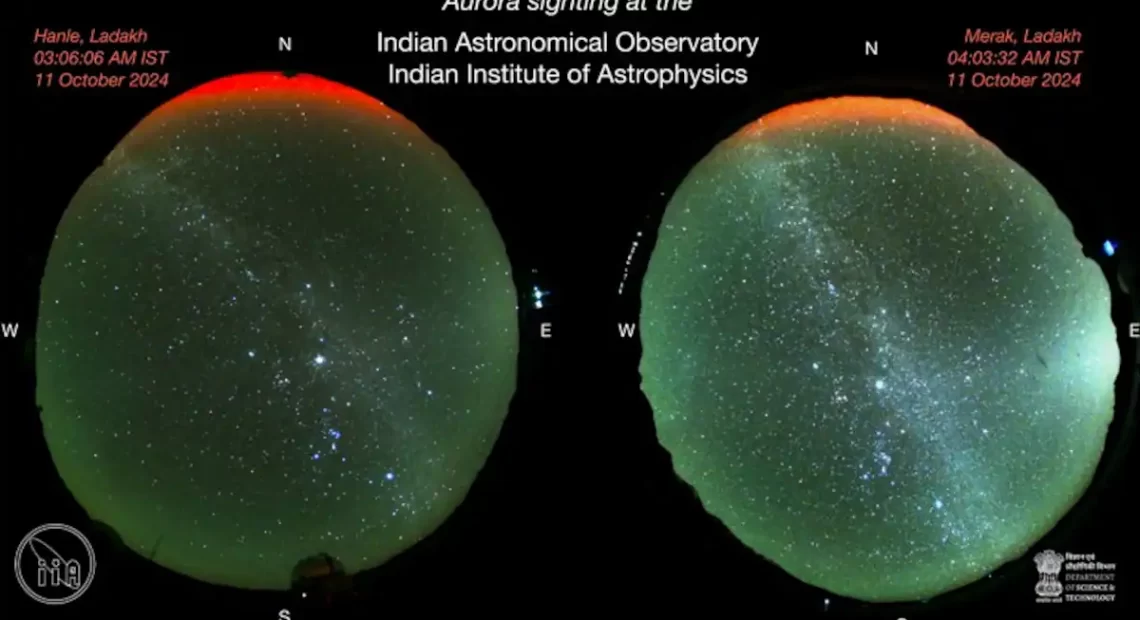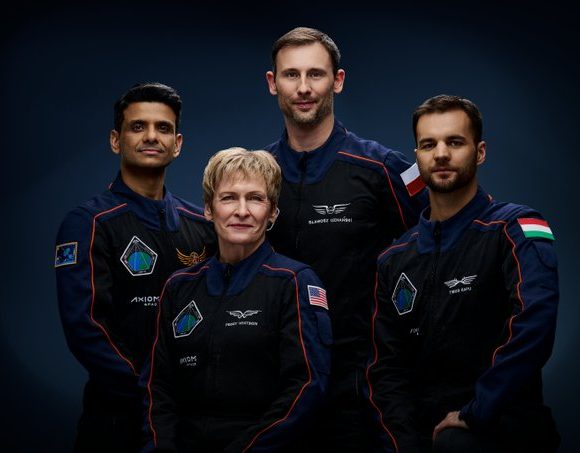Rare Red Auroras Captured in Ladakh Amid Severe Solar Storm
In an extraordinary event, rare red auroras were seen over Leh in Ladakh due to a powerful solar storm. Scientists from the Indian Institute of Astrophysics (IIA), Bengaluru, and the Bhabha Atomic Research Center (BARC), Mumbai, captured the vivid red lights over Hanle, Leh, and Merak as the Sun entered an active phase, throwing charged particles towards Earth.
Intense Solar Storm Causes Rare Red Auroras in Ladakh
The Sun’s recent flares have been so intense that auroras, typically visible near the poles, extended as far south as Ladakh. On the night of October 10-11, 2024, the auroras were spotted and recorded by all-sky cameras stationed in Hanle and Merak. This marked the fourth time such auroras were visible from Ladakh during the current solar cycle.
According to Professor Annapurni Subramaniam, Director of IIA, “The Sun’s activity has increased in recent months, with strong solar flares contributing to these rare auroras at lower latitudes like Hanle.”
G4-Class Geomagnetic Storm Hits Earth
The auroras were a result of a G4-class geomagnetic storm, triggered by a coronal mass ejection (CME) from the Sun. These storms disturb Earth’s magnetic field, leading to auroras. The storm was severe, with Earth’s magnetosphere experiencing significant fluctuations. BARC scientists confirmed that the red hue in the auroras was caused by excited oxygen atoms in Earth’s upper atmosphere.
Dr. Dibyendu Nandi of the Center of Excellence in Space Sciences India (CESSI) emphasized the rarity of witnessing auroras at such latitudes and noted the storm’s broader implications, including the decay of Low Earth Orbiting satellites.
Solar Storm’s Impact on Satellites and Communications
BARC highlighted the risks posed by such solar storms, noting disruptions in high-frequency communications and the potential radiation threat to satellites. Despite the storm’s intensity, ISRO Chairman Dr. S Somanath assured that all Indian satellites remained unaffected.
This event underscores the need for continuous space weather monitoring as solar storms have far-reaching impacts beyond their stunning visual displays, affecting essential infrastructure and communication systems worldwide.






















